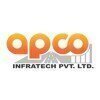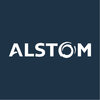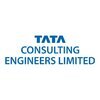Filter interviews by
CHICAGO Maintenance and Construction Safety Inspector Interview Questions and Answers
CHICAGO Maintenance and Construction Safety Inspector Interview Experiences
1 interview found
I applied via Approached by Company and was interviewed in Aug 2017. There was 0 interview round.
Interview Preparation Tips
Skills: Communication, Body Language, Problem Solving, Analytical Skills, Leadership, Presentation Skills, Time Management, Decision Making Skills
Duration: 1-4 weeks
Interview questions from similar companies

I applied via Referral and was interviewed before Jul 2021. There were 2 interview rounds.

(2 Questions)
- Q1. What's about you nd where aru you from About my studies My experience Key skills Where are you studying nd another question
- Q2. Placement nd salery nd facilities
Interview Preparation Tips
- My experience nd my education

I applied via Naukri.com
Interview Questionnaire
1 Question
- Q1. Technical
Interview Preparation Tips

Safety Engineer Interview Questions & Answers
Megha Engineering & Infrastructuresposted on 17 Dec 2021
I applied via Walk-in and was interviewed before Dec 2020. There were 4 interview rounds.
Interview Questionnaire
2 Questions
- Q1. Asked questions about your work experience.
- Q2. Project related hazards and it's control measure.
Interview Preparation Tips

Safety Officer Interview Questions & Answers
Megha Engineering & Infrastructuresposted on 19 Jun 2021
I applied via Walk-in and was interviewed in Dec 2020. There was 1 interview round.
Interview Questionnaire
1 Question
- Q1. 1 Tell me about your self 2 Project work 3 some basic topics related to safety 4 C.V. basic topics
Interview Preparation Tips

Supervisor Interview Questions & Answers
Megha Engineering & Infrastructuresposted on 30 Jun 2021
I applied via Recruitment Consultant and was interviewed in Dec 2020. There were 3 interview rounds.
Interview Questionnaire
1 Question
- Q1. What is the waight of 1m 16 mm steel
- Ans.
The weight of 1m 16 mm steel depends on the density of steel.
The weight of steel can be calculated using the formula: weight = volume x density
The density of steel is approximately 7.85 grams per cubic centimeter
To calculate the weight of 1m 16 mm steel, we need to calculate its volume first
The volume of a cylinder (steel rod) can be calculated using the formula: volume = π x radius^2 x height
In this case, the radius w...
Interview Preparation Tips

Safety Officer Interview Questions & Answers
Shapoorji Pallonji Groupposted on 2 Nov 2021
I applied via Referral and was interviewed before Nov 2020. There was 1 interview round.
Interview Questionnaire
3 Questions
- Q1. About my Self
- Q2. Height work safety & Control measures
- Ans.
Height work safety involves implementing control measures to prevent falls and injuries.
Conducting a risk assessment before starting any work at height
Providing appropriate training and equipment for workers
Implementing a fall protection plan
Regularly inspecting equipment and ensuring it is in good condition
Establishing clear communication and emergency procedures
Examples of control measures include guardrails, safety ...
- Q3. Engineering control, legal control , administrative control, ppe
Interview Preparation Tips

Safety Officer Interview Questions & Answers
Shapoorji Pallonji Groupposted on 2 Nov 2021
I applied via Referral and was interviewed before Nov 2020. There was 1 interview round.
Interview Questionnaire
2 Questions
- Q1. Height work safety &Control measures
- Q2. Administrative control, Engineering control, legal control
Interview Preparation Tips

Deputy Manager Interview Questions & Answers
Apco Infratechposted on 31 Jul 2024
(2 Questions)
- Q1. Family Background
- Q2. Who is ur father etc…. Locality and all
- Ans.
My father is a retired government official who served in the education department. We live in a peaceful neighborhood in the suburbs.
My father is a retired government official
He worked in the education department
We live in a peaceful neighborhood in the suburbs
Interview Preparation Tips

I applied via Naukri.com and was interviewed in Aug 2024. There was 1 interview round.
(4 Questions)
- Q1. Civil department
- Q2. Site supervision
- Q3. Tunnel projects
- Q4. Highways project
Interview Preparation Tips
Tell us how to improve this page.
Interview Questions for Popular Designations
- Safety Engineer Interview Questions
- Safety Manager Interview Questions
- Senior Safety Officer Interview Questions
- Safety Supervisor Interview Questions
- Senior Safety Supervisor Interview Questions
- Safety Officer Interview Questions
- Senior Safety Engineer Interview Questions
- Site Supervisor Interview Questions
- Show more
Interview Questions from Similar Companies
|
Construction Management
5
salaries
| ₹25 L/yr - ₹33.8 L/yr |
|
Project Engineer - Civil
4
salaries
| ₹8 L/yr - ₹30.6 L/yr |
|
HSE Officer
3
salaries
| ₹8.4 L/yr - ₹14.2 L/yr |
|
AM-IT
3
salaries
| ₹30 L/yr - ₹35 L/yr |

Megha Engineering & Infrastructures

Shapoorji Pallonji Group

Alstom Transportation

Tata Technologies
- Home >
- Interviews >
- CHICAGO Maintenance and Construction Interview Questions >
- CHICAGO Maintenance and Construction Safety Inspector Interview Questions
















